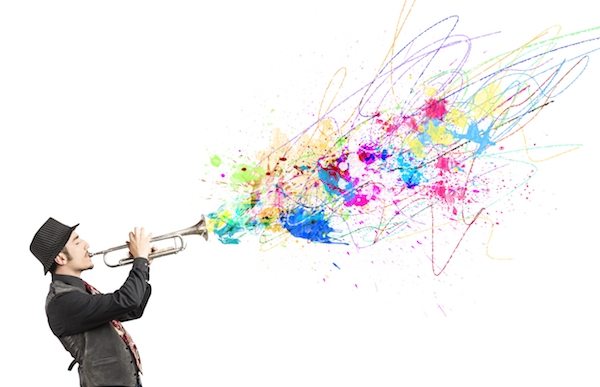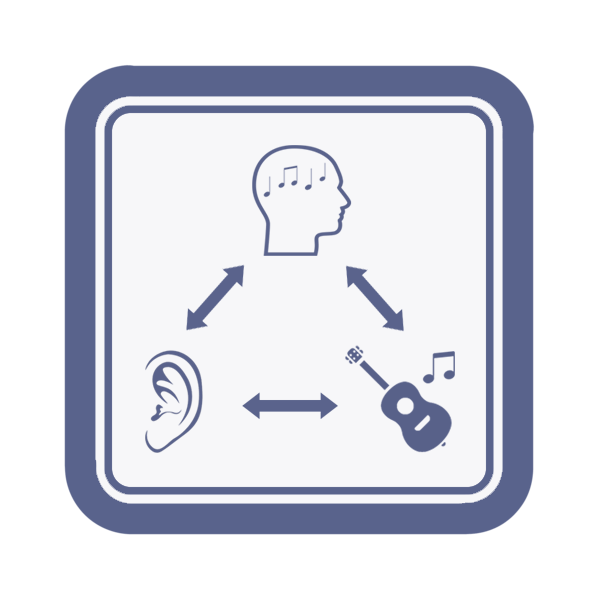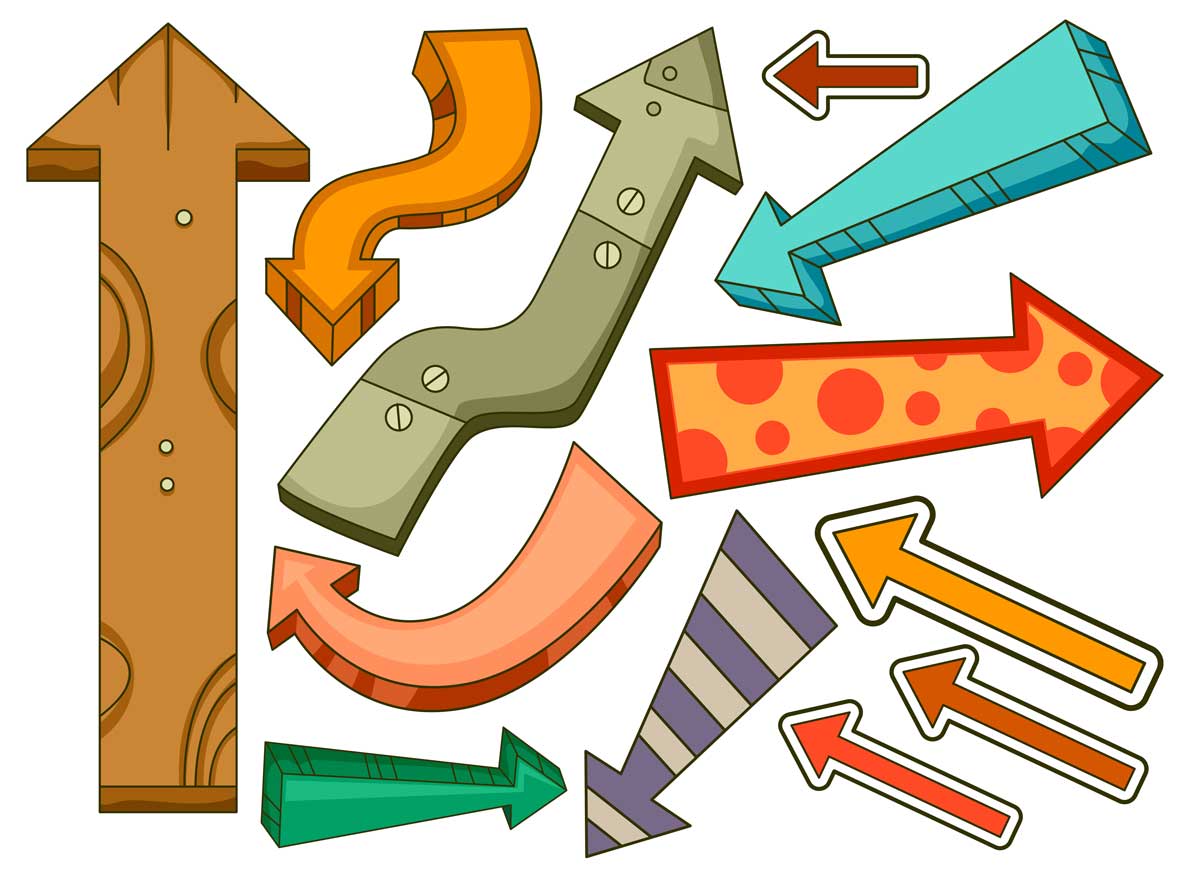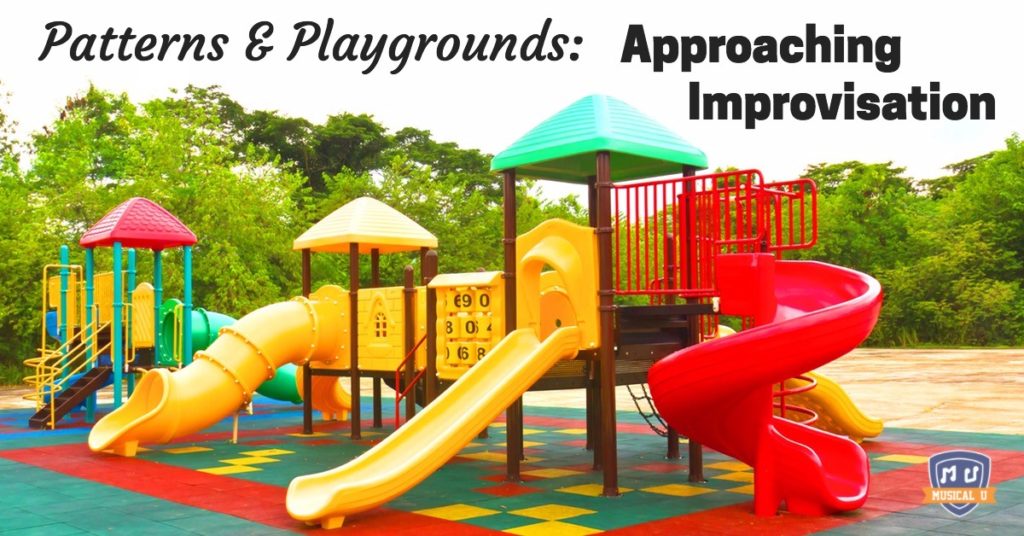If you want to improvise music you are eventually going to have to confront the fact: learning to improvise is hard. Fortunately, there are a handful of insights and approaches you can use to transform this traditionally hard and confusing skill into an easy and natural part of your musicality.
Here at Musical U we’re currently developing our “Learn to Improvise” Roadmap. This will guide musicians of all ability levels through developing the core skills and mentality they need to become capable, confident improvisers in music. We already have Roadmaps for learning to sing, improving your rhythm and playing melodies and chords by ear, but this Improvisation Roadmap is different. It brings an extra challenge.
Why is improvisation hard?
Improvisation can be defined as the spontaneous creation of new music. We all respect the skill and effort involved in songwriting and composing music, so the idea of doing it on-the-fly with instrument in hand naturally seems somewhat incredible. Okay, we don’t expect an improvisation to be as polished and sophisticated as a carefully-composed piece of music, but there’s still something seemingly magical about how improvisers can conjure up great-sounding original music out of nowhere, again and again.
 Anybody who has sat down with their instrument and played notes at random, hoping to discover an untapped “gift” for improvisation will have learned: improvisation is not as simple as playing whatever notes you feel like playing! That typically produces a complete mish-mash of sounds, nothing like the inspiring and moving improvisations we dream of.
Anybody who has sat down with their instrument and played notes at random, hoping to discover an untapped “gift” for improvisation will have learned: improvisation is not as simple as playing whatever notes you feel like playing! That typically produces a complete mish-mash of sounds, nothing like the inspiring and moving improvisations we dream of.
There are certain rules and expectations we all have about what notes in music will sound “good” and which will sound “wrong”. That means that to produce an improvisation that’s pleasing to the listener actually involves making a large number of rapid decisions about which notes to play next, and generally getting those decisions “right”.
So clearly improvisation is not a simple task even if some performers make it seem so.
This is made worse by the fact that typically improvisation is not taught as part of learning an instrument. The focus is almost always on playing notes written on a page, or memorising music somebody else has written. Dedicated jazz musicians or those lucky enough to study with an improvisation-minded teacher might explore improvisation from the beginning, but in general, it’s kept as an “advanced skill” to be learned later or accessed only through some “magical talent” for music.
The result? Most musicians today are intimidated by improvisation and simply have no idea how to learn it effectively.
Approaching Improvisation
 In Musical U we have begun our Improvisation Roadmap with a module called “Approaching Improvisation”. Notice we didn’t start with “Improvising Melodies” or “Improvising Over Chords”. That’s because improvisation, as discussed above, is a complex topic which truly requires a musician to approach it in the right way if they’re going to have any success.
In Musical U we have begun our Improvisation Roadmap with a module called “Approaching Improvisation”. Notice we didn’t start with “Improvising Melodies” or “Improvising Over Chords”. That’s because improvisation, as discussed above, is a complex topic which truly requires a musician to approach it in the right way if they’re going to have any success.
So before discussing the nitty-gritty of “which notes you should play when improvising”, we set out to explain the mindset required to improve quickly in learning to improvise.
For those members with an Instrument Pack we also released our first tutorial videos, on the topic of “beginning improvisation”, to build on that mindset work and start applying the ideas on guitar, bass, piano or through singing.
I’m going to introduce some of the ideas from this introductory improvisation material below. If you’re considering learning to improvise, or if you’ve tried learning and found it frustrating, I hope these ideas will help set you on the right path.
1. Get Your Mindset Right
If there’s one thing you can do to increase your odds of successfully learning to improvise it is this: get your mindset right.
The best exercises or techniques will be no use if you don’t understand how improvisation actually works and how to think about it – and once you do understand it, almost any exercise or technique can be effective in improving your improv skills.
So step one: learn the improviser’s mindset.
If you’ve learned music the traditional way or are just starting out with the normal set of assumptions about improvisation there are a number of fundamental shifts you need to make in your mindset to approach improvisation.
These are covered in detail in our Approaching Improvisation module but I want to just introduce a couple of important ones here.
Don’t fear mistakes
This is something that’s easy to say but incredibly powerful for your improvisation success: don’t fear mistakes. Stop worrying about playing a “wrong” note.
Improvisation is the exact opposite of “playing what you’re told to play” which means that, truly, there are no “right” and “wrong” notes. There are only notes which you think sound good and ones you don’t think sound good.
Here’s the key insight: the only way to learn to consistently play the notes that sound good is to be willing to risk playing ones that sound bad.
If you’re constantly shying away from trying new things for fear of making a “mistake”, you will never feel free or creative in improvisation.

There are exercises and more guidance which can help with this, but it all boils down to a simple change in attitude about being willing to risk playing a “wrong” note occasionally
Note: I said “simple”, not “easy”! This takes work to really internalise, especially if you’ve spent years trying your hardest to avoid mistakes. So not “easy” – but it is “simple”.
Add Audiation and Listening to your Playing
Musicians who don’t improvise typically focus almost exclusively on playing. Practice time is spent refining instrument technique and perfecting repertoire.
If you want to become a capable and confident improviser, you need to incorporate two other steps into your practice. Ideally every time you play, not just when practicing improvisation specifically.
The two steps are: audiation and listening.
These are two large areas of study and we won’t go into them in detail here. To summarise: audiation means you need to be able to imagine the music in your head before you play it, and listening to everything as you play it lets you connect up that audiation with your ear training skills and learn more about improvisation with every note you play.
The improviser’s mindset
So we can see that the skillful improviser has quite a different mindset to the traditional musician.
Musicians who can’t improvise think:
I will gain advanced instrument technique and learn to play specific pieces note-perfect every time. I’ll practice until I can’t play a wrong note because making mistakes is the worst thing you can do in music.
Musicians who can improvise think:
I will audiate and listen carefully each time I play so that every note is an opportunity to improve and extend my improvisation ability. Playing my own notes that sound good is more important than perfecting repertoire or gaining wow-factor technique. I have no fear of “wrong” notes because I make even those into a step towards being a better improviser and more creative musician.
2. Play with Patterns
It was interesting to find that our Resident Pros for Guitar and Bass both chose to introduce improvisation using the minor pentatonic scale.
This is a great idea. It’s a simple and versatile scale which makes it easy to start sounding “good” or “musical” when you experiment with improvising.
 It’s an example of leveraging a pattern for your improvisation. These “patterns” could be scales, chord progressions, rhythms or any other aspect of music that you can take and apply in your own way when improvising.
It’s an example of leveraging a pattern for your improvisation. These “patterns” could be scales, chord progressions, rhythms or any other aspect of music that you can take and apply in your own way when improvising.
Patterns provide you with a shortcut to sounding musical. They’re not foolproof but they let you improvise more easily by restricting the number of choices you need to make in the moment when you improvise. For example, playing a solo using the minor pentatonic scale reduces the number of notes to choose from by more than half. Instead of considering all 12 notes from the octave every time, you’re choosing from a palette of just 5. Much easier!
The best patterns provide useful simplifications like this without being overly restrictive to the point of limiting your creativity.
And therein lies the downside of patterns…
The downside of patterns
Patterns can become a trap.
You only need to attend a blues jam session and listen to the guitar solos to hear this. It’s all too easy for an intermediate-level guitarist to rely on the same minor pentatonic fretboard pattern for every solo. Throw in a few bends and a decent sense of rhythm and the solo will sound pretty good!
The problem: it’s likely to sound a lot like the last solo they played… and the one before that. Boring for the audience and boring for the guitar player.
The trick to successfully using patterns in improvisation isn’t to avoid them completely. It’s to combine them with the ear training that brings them to life.
Patterns: the solution
Ear training can transform a pattern from a fixed thing you use every time in a random way into a valuable and versatile shortcut that in no way limits your creativity when improvising.
To stick with our pentatonic example: using the ear training modules inside Musical U members learn to recognise the notes of the pentatonic scale by ear. This allows them to audiate their solos before playing them – meaning more intention and creativity than choosing notes at random and ultimately better-sounding and more varied improvisations. It also allows them to listen in a more intelligent way, so that they can respond to their own improvisation in the moment and select interesting ways to continue it.
By combining a variety of improvisation patterns like those taught in last month’s Instrument Pack videos with the core ear training inside Musical U, patterns become an easy way to create great-sounding improvisations with true musical freedom and no real limitations.
3. Improvisation Playgrounds
A part of what makes patterns useful in improvisation is that they provide a sort of “safe zone” to experiment in. You can think of it like a musical playground, where you can experiment and have fun without worrying too much about the dangers (i.e. playing a “wrong” note).

Our Resident Pro for piano picked up on this way to approach improvisation in her tutorial video last month, introducing a left-hand harmony part and a right-hand scale pattern that provide a fun “playground” for exploring improvisation on piano or keyboard.
This was an elegant way to get around the problem most pianists face with improvisation: even once you start getting the idea of how to improvise, it’s hard to think fast enough to conjure up good-sounding creations with both left and right hands at once!
Sara provided some great patterns for both hands and created a playground for some really varied and interesting improvisation opportunities. One of the first member responses to this video said “I have always thought ANY improvisation would be completely beyond me, but I followed what you were doing and that gave me the confidence to have a little go on my own and was amazed!”
Patterns and playgrounds go hand-in-hand: patterns are the specific things you can put together to create your own “safe space” for exploring improvisation.
It is possible to injure yourself in a playground, and likewise it is possible to play a “wrong” note while improvising with patterns. Sara provided some useful insights on how to handle this when it arises, but you also need to keep in mind the point from earlier in the article: improvisers don’t fear “wrong” notes.
Give yourself a playground to play in and you can feel much more relaxed and confident when improvising. Yes, you might still play something that sounds bad – but you have a much greater chance of sounding good and some specific inspiring ways to nurture your creativity in different directions.
If you’re nervous about starting to improvise then setting yourself up with a “playground” might just be the ideal way to get going and start enjoying the experience in a relaxed way.
Here’s another easy and unintimidating way to get started…
4. Creative Variations
As musicians, it’s really easy for us to get stuck in a rut. To improve in our craft inherently requires repetition: of study, of exercises, of pieces, of everything.
I loved the way our Guest Pro Nina tackled improvisation in last month’s video for our Singing Instrument Pack, by introducing creativity into something which is normally dull and repetitive: warming up!

In her tutorial she started from some set warmup exercises but then quickly moved towards much more musical ideas than the normal scale-like warmups most singers use, and introduced various ways these exercises could allow personal creative expression, making them your own and using them as a way to experiment with true improvisation.
In a way she created a “playground” in the way described above. She gave our singers some patterns to familiarise themselves with and then build on and extend in their own ways. A way to explore new creative ideas with confidence that they were operating in a “safe space” – doubly so, since these were just intended to warm up the voice anyway and even “wrong” notes can do that!
There’s a bigger lesson here and it applies to all instruments: improvisation isn’t just about playing solos or crafting entirely new music out of nowhere. It’s also about taking something known (for example a warmup exercise, or the melody of a piece of music) and creating your own variations on it. This can be small, like varying just the rhythm, or only a note or two – or it can be extensive, using the original stimulus just as an inspiring starting point for free improvisation.
Like patterns and playgrounds, approaching improvisation in terms of creating variations (rather than starting from scratch) is a very effective way to demystify improvisation and make it less daunting.
How to learn to improvise
Improvisation is impressive and complex. This can make it intimidating, overwhelming, and particularly hard to learn.
As we’ve covered though, there are particular ways to approach improvisation which can change that.
First: get your mindset right. With the “improviser’s mindset”, anything is possible. Without it, almost nothing is. Start to see your mistakes as learning opportunities and embrace the fact that a wrong note is never the end of the world in music. In fact, handled the right way it can even be a good thing for your improvisation, provoking greater creativity and originality. Learn to audiate (imagine music clearly in your mind) before you play and to listen as you play, to transform the rote-learning you may be used to into an in-the-moment experience of musical expression, every time you pick up your instrument.
Use patterns to shortcut your way to good-sounding improvisations. Avoid the trap of being restricted to purely and strictly using the same patterns every time by training your ears to really understand the patterns you’re using and the choices available to you.
Build your own improvisation playgrounds using patterns to create a “safe zone” where you can experiment more freely and confidently, and gradually expand your comfort zone in improvising in a fun and relaxed way.
Take every exercise or repetitive thing you do in music and (without abandoning the useful repetition that does build skill over time) find ways to extend and vary those exercises in your own creative ways. Realise that there are no fixed fences around the things you’ve learned to play – they are fully open to the world of improvisation and you can take small steps to start pushing those limits and transforming dull exercises into your own world of creativity.
By applying these four ways to approach improvisation you will become increasingly brave, increasingly relaxed and increasingly free in your improvisation. You will be building up both your conscious and unconscious knowledge of which notes will sound good when, and become a musician you can easily and confidently improvise creative, original, great-sounding music in any situation. For more detailed guidance and training on everything mentioned here come join us inside Musical U!







